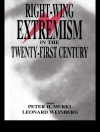How to study the past using data
Quantitative Analysis for Historical Social Science advances historical research in the social sciences by bridging the divide between qualitative and quantitative analysis. Gregory Wawro and Ira Katznelson argue for an expansion of the standard quantitative methodological toolkit with a set of innovative approaches that better capture nuances missed by more commonly used statistical methods. Demonstrating how to employ such promising tools, Wawro and Katznelson address the criticisms made by prominent historians and historically oriented social scientists regarding the shortcomings of mainstream quantitative approaches for studying the past.
Traditional statistical methods have been inadequate in addressing temporality, periodicity, specificity, and context—features central to good historical analysis. To address these shortcomings, Wawro and Katznelson argue for the application of alternative approaches that are particularly well-suited to incorporating these features in empirical investigations. The authors demonstrate the advantages of these techniques with replications of research that locate structural breaks and uncover temporal evolution. They develop new practices for testing claims about path dependence in time-series data, and they discuss the promise and perils of using historical approaches to enhance causal inference.
Opening a dialogue among traditional qualitative scholars and applied quantitative social scientists focusing on history, Quantitative Analysis for Historical Social Science illustrates powerful ways to move historical social science research forward.
Despre autor
Gregory J. Wawro is professor of political science at Columbia University. His books include Filibuster: Obstruction and Lawmaking in the U.S. Senate. Ira Katznelson is the Ruggles Professor of Political Science and History at Columbia University. His books include Fear Itself: The New Deal and the Origins of Our Time.












